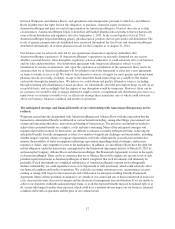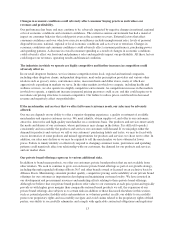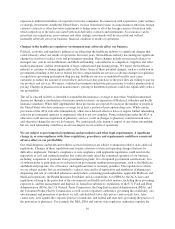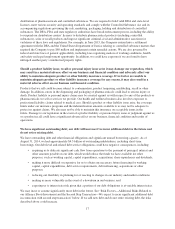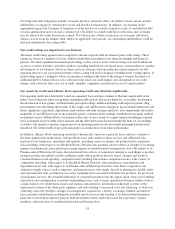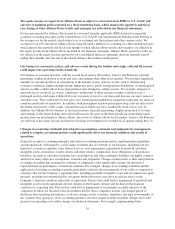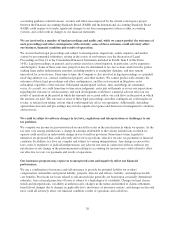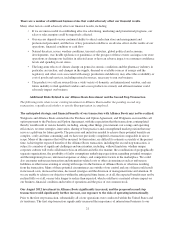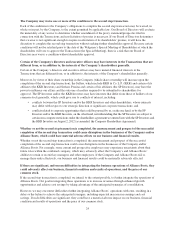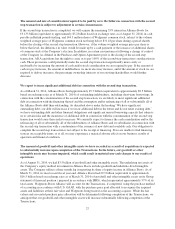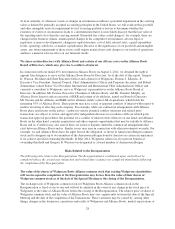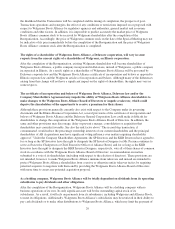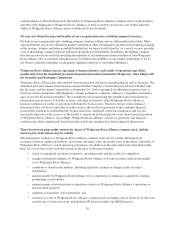Walgreens 2014 Annual Report Download - page 30
Download and view the complete annual report
Please find page 30 of the 2014 Walgreens annual report below. You can navigate through the pages in the report by either clicking on the pages listed below, or by using the keyword search tool below to find specific information within the annual report.future operations, growth and prospects. The completion of the second step transaction will be a material further
step in this direction. A substantial portion of Alliance Boots revenues are generated in the European Union and
neighboring countries and substantially all of Alliance Boots revenues are generated outside the United States.
Our investment in international business operations is subject to a number of risks, including:
• compliance with a wide variety of foreign laws and regulations, including retail and wholesale
pharmacy, licensing, tax, foreign trade, intellectual property, privacy and data protection, currency,
political and other business restrictions and requirements and local laws and regulations, whose
interpretation and enforcement vary significantly among jurisdictions and can change significantly over
time;
• additional U.S. and other regulation of non-domestic operations, including regulation under the Foreign
Corrupt Practices Act, the U.K. Bribery Act and other anti-corruption laws;
• potential difficulties in managing foreign operations, enforcing agreements and collecting receivables
through foreign legal systems;
• price controls imposed by foreign countries;
• tariffs, duties or other restrictions on foreign currencies or trade barriers imposed by foreign countries;
• potential adverse tax consequences, including tax withholding laws and policies and restrictions on
repatriation of funds to the United States;
• fluctuations in currency exchange rates, including uncertainty regarding the Euro;
• impact of recessions and economic slowdowns in economies outside the United States, including
foreign currency devaluation, higher interest rates, inflation, and increased government regulation or
ownership of traditional private businesses;
• the instability of foreign economies, governments and currencies and unexpected regulatory, economic
or political changes in foreign markets; and
• developing and emerging markets may be especially vulnerable to periods of instability and unexpected
changes, and consumers in those markets may have relatively limited resources to spend on products
and services.
We cannot assure you that one or more of these factors will not have a material adverse effect on our business,
results of operation or financial condition.
Our Company will be more exposed to currency exchange rate fluctuations as, following completion of the
second step transaction, there will be an increased proportion of assets, liabilities and earnings
denominated in foreign currencies.
Prior to the first step transaction, substantially all of our operations were conducted within the United States and
its territories. The first step transaction significantly increased the potential impact of currency exchange rate
fluctuations on our business. If the second step transaction is completed, the financial results of the combined
company will be more exposed to currency exchange rate fluctuations and an increased proportion of assets,
liabilities and earnings will be denominated in non-U.S. dollar currencies.
We will continue to present our financial statements in U.S. dollars and will have a significant proportion of net
assets and income in non-U.S. dollar currencies, primarily pounds sterling and the euro, as well as a range of
emerging market currencies. Our financial results and capital ratios will therefore be sensitive to movements in
foreign exchange rates. A depreciation of non-U.S. dollar currencies relative to the U.S. dollar could have an
adverse impact on our financial results.
22


